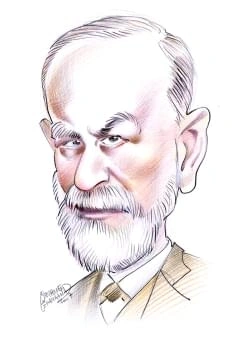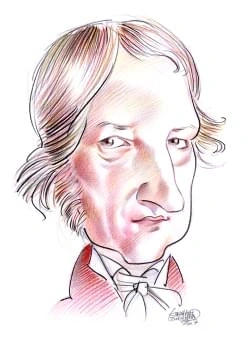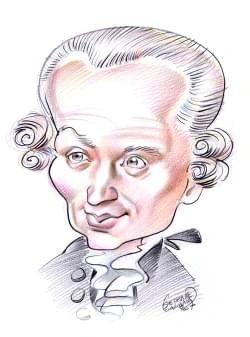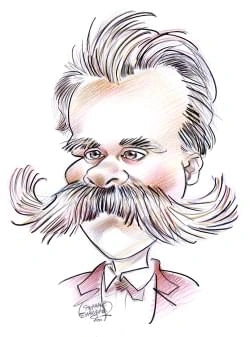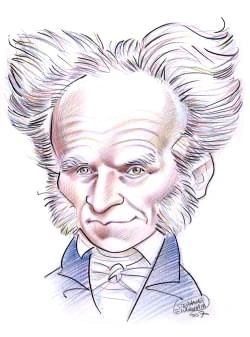398 résultats pour "french"
-
Arkansas - geography.
temperature rises to the upper 30°s C (lower 100°s F). C2 Precipitation Arkansas receives about 1,000 to 1,300 mm (about 40 to 50 in) of precipitation a year, and some areas receive even more. Most of the rain comes during winter andspring and at times is so heavy as to cause flooding. Snow is rare in the south but amounts to more than 250 mm (10 in) a year in the mountains. C3 Growing Season Arkansas has a long growing season. It averages 211 days for the state as a whole and ranges from 241...
-
Arkansas - USA History.
temperature rises to the upper 30°s C (lower 100°s F). C2 Precipitation Arkansas receives about 1,000 to 1,300 mm (about 40 to 50 in) of precipitation a year, and some areas receive even more. Most of the rain comes during winter andspring and at times is so heavy as to cause flooding. Snow is rare in the south but amounts to more than 250 mm (10 in) a year in the mountains. C3 Growing Season Arkansas has a long growing season. It averages 211 days for the state as a whole and ranges from 241...
-
Washington, D.
South of the Federal Triangle is the Mall, a narrow park stretching roughly 1.6 km (1 mi) from the Capitol to the Washington Monument. Although the Mall officially ends at14th Street, landscaped greenery extends to the Potomac. The Washington Monument, whose marble shaft dominates the skyline, stands 169 m (555 ft) high near thecenter of this parkland. The interior of the monument is hollow, and visitors may either climb its 898 steps or ride its elevator 150 m (500 ft) for a magnificent view. A...
-
Ludwig van Beethoven
I
INTRODUCTION
Ludwig van Beethoven (1770-1827), German composer, considered one of the greatest musicians of all time.
dedication after learning that Napoleon had taken the title of emperor. Beethoven’s other instrumental works from the period of the Eroica also tend to expand the formal framework that he inherited from Haydn and Mozart. The Piano Sonata in C major op. 53 ( Waldstein ) and the Piano Sonata in F minor op. 57 ( Appassionata ), completed in 1804 and 1805 respectively, each employ bold contrasts in harmony, and they use a broadened formal plan, in which the meditative slow movements flow directly...
-
Ludwig van Beethoven.
dedication after learning that Napoleon had taken the title of emperor. Beethoven’s other instrumental works from the period of the Eroica also tend to expand the formal framework that he inherited from Haydn and Mozart. The Piano Sonata in C major op. 53 ( Waldstein ) and the Piano Sonata in F minor op. 57 ( Appassionata ), completed in 1804 and 1805 respectively, each employ bold contrasts in harmony, and they use a broadened formal plan, in which the meditative slow movements flow directly...
-
Sir Charles Tupper.
campaign, Macdonald asked him to become minister of finance. He was then sent to Washington, D.C., as leader of the Canadian delegation to settle a fisheries disputewith the United States. A treaty was worked out and signed, but the U.S. Senate refused to ratify it. Tupper had already become a Knight Commander of St. Michaeland St. George in 1879, and he received the Knight Grand Cross of St. Michael and St. George in 1886. For his services in Washington he was given the hereditary titleof baron...
-
Sir Charles Tupper - Canadian History.
campaign, Macdonald asked him to become minister of finance. He was then sent to Washington, D.C., as leader of the Canadian delegation to settle a fisheries disputewith the United States. A treaty was worked out and signed, but the U.S. Senate refused to ratify it. Tupper had already become a Knight Commander of St. Michaeland St. George in 1879, and he received the Knight Grand Cross of St. Michael and St. George in 1886. For his services in Washington he was given the hereditary titleof baron...
-
Minnesota - geography.
C Climate Minnesota’s climate is classified as humid continental because normally there is a sufficient amount of precipitation to provide at least some surplus for runoff, andbecause Minnesota’s temperature conditions are largely controlled by its location in the interior of the large landmass of North America. The result is extreme seasonaltemperature variations. The average January temperature is about -18°C (about 0°F) in the northwest and about -10°C (about 14°F) in the south, but thetherm...
-
-
Minnesota - USA History.
C Climate Minnesota’s climate is classified as humid continental because normally there is a sufficient amount of precipitation to provide at least some surplus for runoff, andbecause Minnesota’s temperature conditions are largely controlled by its location in the interior of the large landmass of North America. The result is extreme seasonaltemperature variations. The average January temperature is about -18°C (about 0°F) in the northwest and about -10°C (about 14°F) in the south, but thetherm...
-
Federal Republic of Germany - country.
B Rivers and Lakes Rivers have played a major role in Germany’s economic development. The Rhine River flows in a northwesterly direction from Switzerland through much of westernGermany and The Netherlands into the North Sea. It is a major European waterway and a pillar of commerce and trade. Its primary German tributaries include theMain, Mosel, Neckar, and Ruhr rivers. The Oder (Odra) River, along the border between Poland and Germany, runs northward and empties into the Baltic; it provides an...
-
Pennsylvania - geography.
B Rivers and Lakes There are three major river basins in Pennsylvania: the Susquehanna, the Ohio, and the Delaware. Together they drain more than 90 percent of Pennsylvania’s landarea. Most of eastern and central Pennsylvania is drained by the Susquehanna and Delaware systems. The western part of the state is drained by the Allegheny andMonongahela rivers, which join at Pittsburgh to form the Ohio. In addition to the three major river basins, short streams flowing into Lake Erie drain the north...
-
Pennsylvania - USA History.
B Rivers and Lakes There are three major river basins in Pennsylvania: the Susquehanna, the Ohio, and the Delaware. Together they drain more than 90 percent of Pennsylvania’s landarea. Most of eastern and central Pennsylvania is drained by the Susquehanna and Delaware systems. The western part of the state is drained by the Allegheny andMonongahela rivers, which join at Pittsburgh to form the Ohio. In addition to the three major river basins, short streams flowing into Lake Erie drain the north...
-
Africa.
The highest elevations in Africa are found in the various ranges of East Africa. After Kilimanjaro, the next highest peaks are Mount Kenya (5,199 m/17,057 ft), north ofKilimanjaro in central Kenya; Margherita Peak (5,109 m/ 16,762 ft) in the Ruwenzori Range on the border between Uganda and the Democratic Republic of the Congo(DRC); Ras Dashen (4,620 m/ 15,157 ft) in the Ethiopian Highlands of northern Ethiopia; Mount Meru (4,565 m/ 14,977 ft), close to Kilimanjaro in Tanzania; and MountElgon (4,...
-
Africa - Geography.
The highest elevations in Africa are found in the various ranges of East Africa. After Kilimanjaro, the next highest peaks are Mount Kenya (5,199 m/17,057 ft), north ofKilimanjaro in central Kenya; Margherita Peak (5,109 m/ 16,762 ft) in the Ruwenzori Range on the border between Uganda and the Democratic Republic of the Congo(DRC); Ras Dashen (4,620 m/ 15,157 ft) in the Ethiopian Highlands of northern Ethiopia; Mount Meru (4,565 m/ 14,977 ft), close to Kilimanjaro in Tanzania; and MountElgon (4,...
-
Tennessee (state) - geography.
The climate of Tennessee is characterized by hot summers, mild winters, and abundant rainfall. C1 Temperature Average July temperatures range from less than 21° C (70° F) in the Blue Ridge region to 27° C (80° F) at Nashville and Memphis. Maximum daytime temperatures insummer often rise above 35° C (95° F) in central and western Tennessee. Daytime temperatures in the mountains rarely rise above 32° C (90° F). Summer nights tendto be warm and muggy in central and western Tennessee, but temperatu...
-
Tennessee (state) - USA History.
The climate of Tennessee is characterized by hot summers, mild winters, and abundant rainfall. C1 Temperature Average July temperatures range from less than 21° C (70° F) in the Blue Ridge region to 27° C (80° F) at Nashville and Memphis. Maximum daytime temperatures insummer often rise above 35° C (95° F) in central and western Tennessee. Daytime temperatures in the mountains rarely rise above 32° C (90° F). Summer nights tendto be warm and muggy in central and western Tennessee, but temperatu...
-
-
Florida - USA History.
accidentally introduced into the region in the 1880s, and it spread with alarming rapidity throughout the upper reaches of the river. The plant is very difficult toeradicate, and it has also clogged the channels of other Florida rivers. To increase drainage of the Everglades, which drain naturally to Florida Bay and the Gulf ofMexico, a number of drainage channels and canals have been built across southern Florida. Among the rivers flowing from the peninsula to the Gulf of Mexico are the Suwanne...
-
From Bulfinch's Mythology: Charlemagne - anthology.
The titles of some of Archbishop Turpin's chapters will show the nature of his history. They are these: 'Of the Walls of Pampeluna, that fell of themselves.' 'Of theWar of the holy Facundus, where the Spears grew.' (Certain of the Christians fixed their spears, in the evening, erect in the ground, before the castle; and found them,in the morning, covered with bark and branches.) 'How the Sun stood still for Three Days, and the Slaughter of Four Thousand Saracens.' Turpin's history has perhap...
-
Native Americans of North America.
addition to smallpox and measles, explorers and colonists brought a host of other diseases: bubonic plague, cholera, typhoid fever, scarlet fever, pleurisy, mumps,diphtheria, pneumonia, whooping cough, malaria, yellow fever, and various sexually transmitted infections. Despite the undisputed devastation wreaked on Indian populations after European contact, native populations showed enormous regional variability in their response todisease exposure. Some peoples survived and, in some cases, even...
-
Native Americans of North America - Canadian History.
addition to smallpox and measles, explorers and colonists brought a host of other diseases: bubonic plague, cholera, typhoid fever, scarlet fever, pleurisy, mumps,diphtheria, pneumonia, whooping cough, malaria, yellow fever, and various sexually transmitted infections. Despite the undisputed devastation wreaked on Indian populations after European contact, native populations showed enormous regional variability in their response todisease exposure. Some peoples survived and, in some cases, even...
-
Egypt - country.
Egypt has a wide variety of mineral deposits, some of which, such as gold and red granite, have been exploited since ancient times. The chief mineral resource ofcontemporary value is petroleum, found mainly in the Red Sea coastal region, at Al ‘Alamayn (El ‘Alamein) on the Mediterranean, and on the Sinai Peninsula. Otherminerals include phosphates, manganese, iron ore, and uranium. Natural gas is also extracted. D Plants and Animals The vegetation of Egypt is confined largely to the Nile Delta,...
-
Missouri - geography.
Saint Francois Mountains, at the eastern end of the crest of the dome. Only in these mountains have the sedimentary rocks been sufficiently eroded away so that theunderlying igneous rocks are exposed. They form the rounded, knoblike peaks of an old mountain range. The peaks project, in isolation or in clusters, between 230 and300 m (750 and 1,000 ft) above the surrounding sedimentary basins. One of these knobs, Taum Sauk Mountain, reaches 540 m (1,772 ft) above sea level and is thehighest point...
-
Missouri - USA History.
Saint Francois Mountains, at the eastern end of the crest of the dome. Only in these mountains have the sedimentary rocks been sufficiently eroded away so that theunderlying igneous rocks are exposed. They form the rounded, knoblike peaks of an old mountain range. The peaks project, in isolation or in clusters, between 230 and300 m (750 and 1,000 ft) above the surrounding sedimentary basins. One of these knobs, Taum Sauk Mountain, reaches 540 m (1,772 ft) above sea level and is thehighest point...
-
Acting
I
INTRODUCTION
Lee Strasberg
American acting teacher Lee Strasberg was best known for his association with the Actors Studio, of which he became the
artistic director in 1951.
truthfully felt those emotions at the moment they expressed them. Finding the true feeling in the proper place and time on stage, however, was a problem that Aristotleaddressed less well. He concluded that acting was an occupation for the gifted or insane. How to cross the artistic boundary beyond feigned emotions and flat imitation obsessed many Greek actors. In 315 BC the tragedian Polus carried the real ashes of his recently deceased son in an urn to stimulate a sense of genuine grief when h...
-
-
Spain - country.
B Natural Resources Spain has a number of mineral resources. The largest known deposits are of iron ore, zinc, and lead. Spain also produces significant quantities of copper and mercury.These deposits are mined mainly in Huelva province in southwestern Spain, around Cartagena on the Mediterranean, and at various points along the Bay of Biscay inthe north. Additionally, uranium is mined in the region of Extremadura, near the Portuguese frontier, where pyrites, fluorspar, gypsum, tungsten, and po...
-
Charles Dickens
I
INTRODUCTION
Charles Dickens
English author Charles Dickens ranks as one of the most popular writers in the history of world literature.
Papers of the Pickwick Club (1836-1837; 1837); The Adventures of Oliver Twist (1837-1839; 1838); The Life and Adventures of Nicholas Nickleby (1838-1839; 1839); The Old Curiosity Shop (1840-1841; 1841); Barnaby Rudge (1841); The Life and Adventures of Martin Chuzzlewit (1843-1844; 1844); Dombey and Son (1846-1848; 1848); The Personal History of David Copperfield (1849-1850; 1850); Bleak House (1852-1853; 1853); Hard Times (1854); Little Dorrit (1855-1857; 1857); A Tale of Tw...
-
Coins and Coin Collecting.
U.S. coins dates from 1909, when the first Lincoln Cents appeared during the centennial of Abraham Lincoln’s birth. George Washington’s profile was used on thequarter-dollar of 1932, a coin originally intended as a one-year commemorative to honor the 200th anniversary of his birth. The design quickly became so popular thatit was retained for regular-issue quarters and is still being used today. Thomas Jefferson, Franklin D. Roosevelt, John F. Kennedy, and Dwight D. Eisenhower are theother Americ...
-
Moscow (city, Russia) - geography.
V RECREATION About 30 percent of Moscow’s territory is occupied by parks and public gardens, which were important elements of Soviet city planning. Gorky Park, which providesactivities such as amusement rides and boating, sits on the right bank of the Moscow River; the park’s display of a retired Soviet space shuttle dominates the riverside.The Moscow Zoo is located just west of the city center. The Botanical Gardens, administered by the Russian Academy of Sciences, offers a diverse display of...
-
Thomas Edison.
While Edison was working on the electric light, he made a scientific discovery that would become important to future generations. Edison noticed that particles of carbonfrom the filament blackened the insides of his light bulbs. This effect was caused by the emission of electrons from the filament, although Edison made the discoverybefore he and other scientists knew the electron existed. Not until 1897 did British physicist J. J. Thomson prove that the blackening observed by Edison was caused b...
-
Thomas Edison - USA History.
While Edison was working on the electric light, he made a scientific discovery that would become important to future generations. Edison noticed that particles of carbonfrom the filament blackened the insides of his light bulbs. This effect was caused by the emission of electrons from the filament, although Edison made the discoverybefore he and other scientists knew the electron existed. Not until 1897 did British physicist J. J. Thomson prove that the blackening observed by Edison was caused b...
-
Wolfgang Amadeus Mozart
I
INTRODUCTION
Wolfgang Amadeus Mozart
Wolfgang Amadeus Mozart, an 18th-century Austrian classical composer and one of the most famous musicians of all time,
came from a family of musicians that included his father and sister.
The opera, Mitridati, rè di Ponto (Mithridates, King of Pontus), was produced in 1770 in Milan under Mozart’s direction with success. Also that year the pope made Mozart a knight of the Order of the Golden Spur. A Salzburg and Germany From 1775 to 1780 Mozart was based mainly in Salzburg working for the archbishop Hieronymous von Colloredo. Although dissatisfied with the low pay and limitedopportunities his employment offered, Mozart composed many works during this period, including his first...
-
United Kingdom - country.
B Natural Regions and Topography The island of Great Britain can be divided into two major natural regions—the highland zone and the lowland zone. The highland zone is an area of high hills andmountains in the north and west. The lowland zone in the south and east consists mostly of rolling plains. The zones are divided by an imaginary line running throughEngland from the River Exe on the southwest coast to the mouth of the River Tees on the northeast coast. The lowland zone has a milder climat...
-
- France, air force of
-
Toys.
I
INTRODUCTION
Toys, objects that serve as playthings for children. Although the
clay. These readily available elements were also used to make more elaborate toys as human society advanced. Archaeologists have found primitive, handmade toys such as wooden or cloth dolls, clay marbles, and terracotta figures that date back thousands of years. In ancientEgypt, Greece, and Rome, people placed dolls or clay figures in the graves or tombs of children for them to play with in the afterlife. The yo-yo may seem like a 20th-century fad, but it actually dates back at least 2,500 years...
-
American Music
I
INTRODUCTION
American Music, the folk, popular, and classical music of the United States--created by American-born or American-trained composers, or originating in American
culture, or written primarily for American audiences.
The country's first permanent orchestra was the New York Philharmonic Society, founded in 1842. Among the first symphonic and operatic composers the mostprominent was William Henry Fry, who composed the first opera by an American ( Leonora, 1845). Fry is best remembered, however, for four symphonies written in the 1850s and 1860s. George F. Bristow wrote the first opera on an American theme; his Rip Van Winkle was performed in New York City in 1855. Town bands, a popular form of community mu...
-
Mountain Climbing.
teeth on one side, and a straight, flat, metal blade called an adze on the other. Ice axes have many uses. One of the most common is to help the climber stay balanced on steep slopes. The climber swings the axe with a short, quick movement to lodge the pick in snow or ice, creating a secure anchor. If a climber should slip and beginsliding down a snowfield, a self-arrest can be performed by turning face down on the snow and burying the pick in the snow surface. The climber’s weight over the...
-
Religion.
By the end of the 19th century, scholars were making religion an object of systematic inquiry. Müller’s comparative approach was adopted in many European andJapanese universities, and as a result the common features of world religions (such as gods, prayer, priesthood, and creation myths) were the subjects of sustainedscholarly investigation. In addition, field anthropologists had begun to compile firsthand accounts of the religions of peoples who previously had been dismissed assavages. The stu...
-
Wisconsin (state) - geography.
-6° C (22° F) in the southeast, along the Lake Michigan shore. During winter extremely cold weather persists for several weeks at a time. C2 Precipitation Average annual precipitation ranges from 700 to 800 mm (28 to 32 in). Rainfall is generally heaviest during the spring and summer, and snowfall is generally moderatein the south, but can be quite heavy in the north. Thunderstorms, sometimes accompanied by devastating tornadoes, are common in spring and summer, particularly inthe southern part...
-
Wisconsin (state) - USA History.
-6° C (22° F) in the southeast, along the Lake Michigan shore. During winter extremely cold weather persists for several weeks at a time. C2 Precipitation Average annual precipitation ranges from 700 to 800 mm (28 to 32 in). Rainfall is generally heaviest during the spring and summer, and snowfall is generally moderatein the south, but can be quite heavy in the north. Thunderstorms, sometimes accompanied by devastating tornadoes, are common in spring and summer, particularly inthe southern part...
-
Philadelphia (city, Pennsylvania) - geography.
national trend of migration from eastern cities to the warmer climate of the Sun Belt. Whereas in 1950 Philadelphia contained more than 2 million people and ranked as the third largest city in America, the city's population plunged to 1,517,550 by 2000.In 2006, the city's population was estimated at 1,448,394. While the city proper was decreasing in population, the metropolitan area centered on Philadelphia grew. In 2006 the region had 6.2 million inhabitants. Philadelphiaranked as the nation’s...
-
-
American Literature: Drama
I
INTRODUCTION
American Literature: Drama, literature intended for performance, written by Americans in the English language.
American plays, while still a minority, began to appear in the theater repertory in the 19th century. Although American plays were still styled after British models, theirsubject matter came to be based on specifically American incidents or themes. In the United States as in Britain, many plays reflected the influence of romanticism , a European literary and artistic movement. Melodrama, with its outpourings of emotion, was the most prevalent dramatic form in the 19th century. Gothic melodramas...
-
Washington, D.
structures built according to L’Enfant’s plan. During the War of 1812, British troops set fire to the White House, destroying its interior. President James Madison and hisfamily lived in the Octagon while the White House was being rebuilt. South of the Federal Triangle is the Mall, a narrow park stretching roughly 1.6 km (1 mi) from the Capitol to the Washington Monument. Although the Mall officially endsat 14th Street, landscaped greenery extends to the Potomac. The Washington Monument, whose m...
-
Quantum Theory
I
INTRODUCTION
Quantum Theory, in physics, description of the particles that make up matter and how they interact with each other and with energy.
electron in the same way a particle with momentum would: It bumps the electron and changes the electron’s path. The light is also affected by the collision as though itwere a particle, in that its energy and momentum changes. Momentum is a quantity that can be defined for all particles. For light particles, or photons, momentum depends on the frequency, or color, of the photon, which in turndepends on the photon’s energy. The energy of a photon is equal to a constant number, called Planck’s cons...
-
Chemistry - chemistry.
parts of oxygen by weight, which is a ratio of about 1 to 8, regardless of whether the water came from the Mississippi River or the ice of Antarctica. In other words, acompound has a definite, invariable composition, always containing the same elements in the same proportions by weight; this is the law of definite proportions. Many elements combine in more than one ratio, giving different compounds. In addition to forming water, hydrogen and oxygen also form hydrogen peroxide.Hydrogen peroxide h...
-
Ohio - geography.
conflict with modified Gulf air and causing frontal or cyclonic storms. Gulf air is dominant in summer. In fall, polar air passing over Lake Erie is modified, delaying thekilling frost along the adjacent shoreline. C1 Temperatures The mean annual temperatures for the state range from 9° C (48° F) in the northeast to 13° C (55° F) in the south. Average January temperatures range from -4° C(24° F) in the west to 2° C (35° F) in the south. July averages are 24° C (76° F) in the south and 23° C (73...
-
Ohio - USA History.
conflict with modified Gulf air and causing frontal or cyclonic storms. Gulf air is dominant in summer. In fall, polar air passing over Lake Erie is modified, delaying thekilling frost along the adjacent shoreline. C1 Temperatures The mean annual temperatures for the state range from 9° C (48° F) in the northeast to 13° C (55° F) in the south. Average January temperatures range from -4° C(24° F) in the west to 2° C (35° F) in the south. July averages are 24° C (76° F) in the south and 23° C (73...
-
New York - geography.
The Adirondack province consists of a large highland area occupying 26,000 sq km (10,000 sq mi) in the northeastern quarter of the state. The region is domelike inshape, with the higher elevations toward the east. The western Adirondack province is more a rugged hill region and not truly mountainous. Geologically, this area isrelated to the Laurentian Upland, or Canadian Shield, which lies north of the St. Lawrence River, for it is composed of the same very old igneous rocks, principallygranite...
-
New York - USA History.
The Adirondack province consists of a large highland area occupying 26,000 sq km (10,000 sq mi) in the northeastern quarter of the state. The region is domelike inshape, with the higher elevations toward the east. The western Adirondack province is more a rugged hill region and not truly mountainous. Geologically, this area isrelated to the Laurentian Upland, or Canadian Shield, which lies north of the St. Lawrence River, for it is composed of the same very old igneous rocks, principallygranite...
}})
